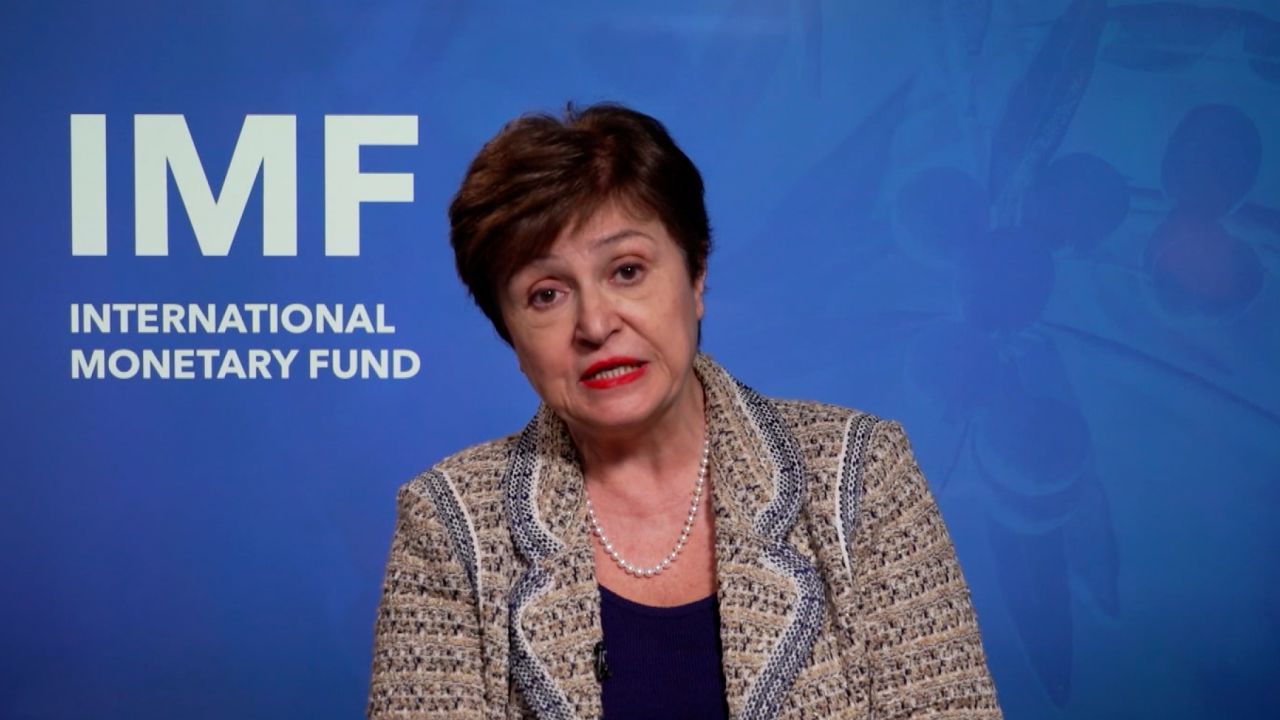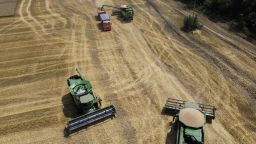A version of this story first appeared in CNN Business’ Before the Bell newsletter. Not a subscriber? You can sign up right here. You can listen to an audio version of the newsletter by clicking the same link.
Russia’s war in Ukraine is roiling the global economy as policymakers race to get high inflation under control. But China’s response to its worst outbreak of Covid-19 in two years is a reminder that the conflict isn’t the only risk to the recovery.
What’s happening: The world’s second-largest economy is pushing ahead with its “zero-Covid” strategy, even as many other governments decide it’s time to learn to live with the virus.
Shenzhen, an important tech hub, has entered a weeklong lockdown after the city recorded 66 positive cases on Saturday. All businesses except those deemed essential have paused operations or have implemented working from home. Shanghai, China’s largest business center, has also imposed stringent measures following a spike in cases, closing schools and movie theaters and restricting travel into the city.
Who gets hit: Foxconn, one of Apple’s biggest suppliers, has suspended its operations in Shenzhen, where it has two major campuses. It said Monday that the date factory work will resume will “be advised by the local government.”
The Taiwanese company said it had shifted production to other sites to “minimize the potential impact” from the disruption, but didn’t specify which locations would take on extra work.
Uncertainty around Foxconn’s production is one sign of how China’s response to the jump in coronavirus infections will ripple around the world. The country recorded 2,125 local cases on Sunday across 58 cities.
Lockdowns in China could further drive up container shipping costs, which remain extremely high, and scramble global supply chains that are still trying to sort through pandemic-related delays.
“If there is a case found in the Yantian port [in Shenzhen], then there could be a port suspension for at least two weeks,” economists at ING told clients Monday. “That will then affect exports and imports of electronic parts and goods.”
That could make inflation even worse. Spending inside China, an important engine of the country’s growth, could also be affected by a new wave of Covid restrictions.
“This is certainly the worst virus situation in China since the Wuhan lockdown, and threatens the growth outlook as the domestic consumption will take another hit,” Commerzbank economists Hao Zhou and Bernd Weidensteiner said Monday.
Remember: China’s growth target of about 5.5% this year was already its lowest in three decades. The country’s economy expanded 8.1% in 2021, but the pace of growth dropped sharply in the final months of the year.
War has brought the world to the brink of a food crisis
Svein Tore Holsether says the world is careening toward a food crisis that could affect millions of people.
Record high natural gas prices have forced the company he runs, fertilizer producer Yara International, to curtail its production of ammonia and urea in Europe to 45% of capacity. With less of those two essential agricultural ingredients, he expects knock-on effects for global food supplies.
“It’s not whether we are going to have a food crisis. It’s how large that crisis will be,” Holsether told me.
Step back: More than two weeks after Russia invaded Ukraine, the prices of key agricultural products produced in the region have skyrocketed. The biggest problem is wheat, a pantry staple. Supplies from Russia and Ukraine, which together account for almost 30% of global wheat trade, are now at risk. Global wheat prices hit an all-time high last week.
There’s more: Another major problem is access to fertilizer. Essential for farmers to hit their production targets for crops, it’s never been more expensive, as exports from Russia grind to a halt. Output in Europe has also plunged thanks to the surging price of natural gas, an essential ingredient in nitrogen-based fertilizers like urea.
The situation is ringing alarm bells for global food experts. Agriculture ministers from the G7 countries met Friday to discuss the looming fallout.
“Any further increase in food price levels and volatility in international markets could threaten food security and nutrition at a global scale, especially among the most vulnerable living in environments of low food security,” they said in a statement after the meeting.
Russia and Ukraine serve as the breadbasket for countries in the Middle East and North Africa that depend on imports. The United States and Europe will feel the pain, too, since the run-up in prices for important agricultural goods will affect businesses that produce food in every market.
Uber’s fuel surcharge could be just the beginning
Everyone is feeling pain at the pump — even Uber (UBER).
The ride-sharing service has announced that it’s rolling out a fuel surcharge to help its drivers offset the burden of higher gas prices for at least the next two months, my CNN Business colleague Ramishah Maruf reports.
Starting Wednesday, users will pay an extra $0.45 or $0.55 per trip and an additional $0.35 or $0.45 for Uber Eats, depending on the location. Uber said all the money from the surcharges will go to drivers.
“We know that prices have been going up across the economy, so we’ve done our best to help drivers and couriers without placing too much additional burden on consumers,” said Liza Winship, head of driver operations for the US and Canada.
Uber said switching to electric vehicles will be the best way to avoid skyrocketing gas prices in the long term. It’s giving up to $4,000 annually to drivers who use electric cars and has partnered with Hertz to make as many as 50,000 Teslas available for drivers to rent by 2023.
In the meantime, though, soaring fuel costs are likely to bite. And Uber won’t be alone in deciding it needs to pass some of the expense along to its customers.
On the radar: Passengers could also start to see surcharges on flights, since fuel accounts for between 20% and 30% of airline operating costs.
Up next
The Producer Price Index, a key gauge of US inflation, arrives Tuesday.

























